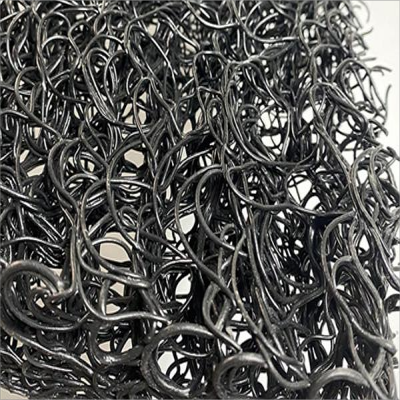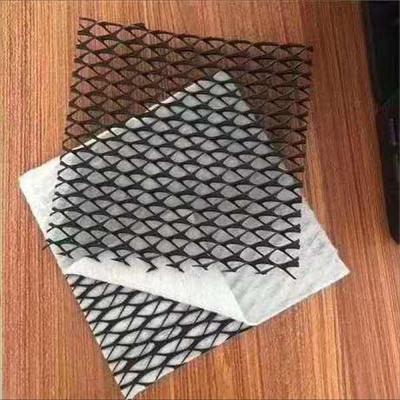1. Comparison of material and structure
1、The composite drainage net is composed of a three-dimensional plastic mesh core and a water-permeable geotextile bonded on both sides. The plastic mesh core is generally made of high-density polyethylene ( HDPE) Made of such polymer materials, it has the characteristics of high strength, corrosion resistance and aging resistance. Water-permeable geotextiles can enhance the water permeability and filtration properties of the material, preventing soil particles from entering the drainage channel. The composite drainage net has a three-layer special structure, so its drainage performance and tensile strength are very good.
2、The geomat mat is made of mesh melt laying, which consists of high-quality geonet core and non-woven geotextile with needle punched and perforated holes on both sides. The three-dimensional mesh structure of geomat mats allows water to flow through quickly, and it can also effectively lock soil particles to prevent soil erosion. Its unique mesh design allows it to maintain very good water drainage performance under high loads.
2. Performance comparison
1、Drainage performance: Both composite drainage nets and geomat mats have very good drainage performance, but the drainage efficiency of composite drainage nets may be higher. Because it is a combination of three-dimensional plastic mesh core and water-permeable geotextile, its mesh can discharge accumulated water more quickly and shorten the drainage time.
2、Tensile strength: The composite drainage net has high tensile strength and can withstand larger loads. Although the geomat mat also has a certain tensile strength, it is worse than the drainage net.
3、Corrosion Resistance: Both materials have very good corrosion resistance and can be used in corrosive environments such as acids, alkalis and salts for a long time. However, the main component of composite drainage net is polymer material, so it has better corrosion resistance in some extreme environments.
4、Construction convenience: Composite drainage networks and geomat mats have certain convenience in construction. Because the composite drainage net adopts the form of rolls or sheets, it is more convenient to lay. However, geomat mats are easier to adapt to complex construction environments because of their good flexibility.
3. Comparison of application scenarios
1、Composite drainage network is mainly used in drainage projects such as railways, highways, tunnels, municipal projects, reservoirs, and slope protection. It has very good drainage performance and high tensile strength. In landfills, the composite drainage network can also be used in groundwater drainage layer, leakage detection layer, leachate collection drainage layer, etc.
2、Geomat mats can be used in highway slope protection, railway subgrade drainage, roof greening and drainage, ecological restoration projects and other fields. In landfills, it can discharge biogas produced by fermentation in the soil to prevent gas accumulation from causing potential safety hazards.
It can be seen from the above that there are significant differences between composite drainage nets and geomat mats in terms of material, structure, performance and application scenarios. In actual projects, appropriate drainage materials should be selected according to specific needs and environmental conditions. Composite drainage networks are suitable for engineering scenarios that require efficient drainage and high tensile strength, while geomat mats are more suitable for projects that require good flexibility and adaptability to complex construction environments.
Post time: Apr-07-2025





